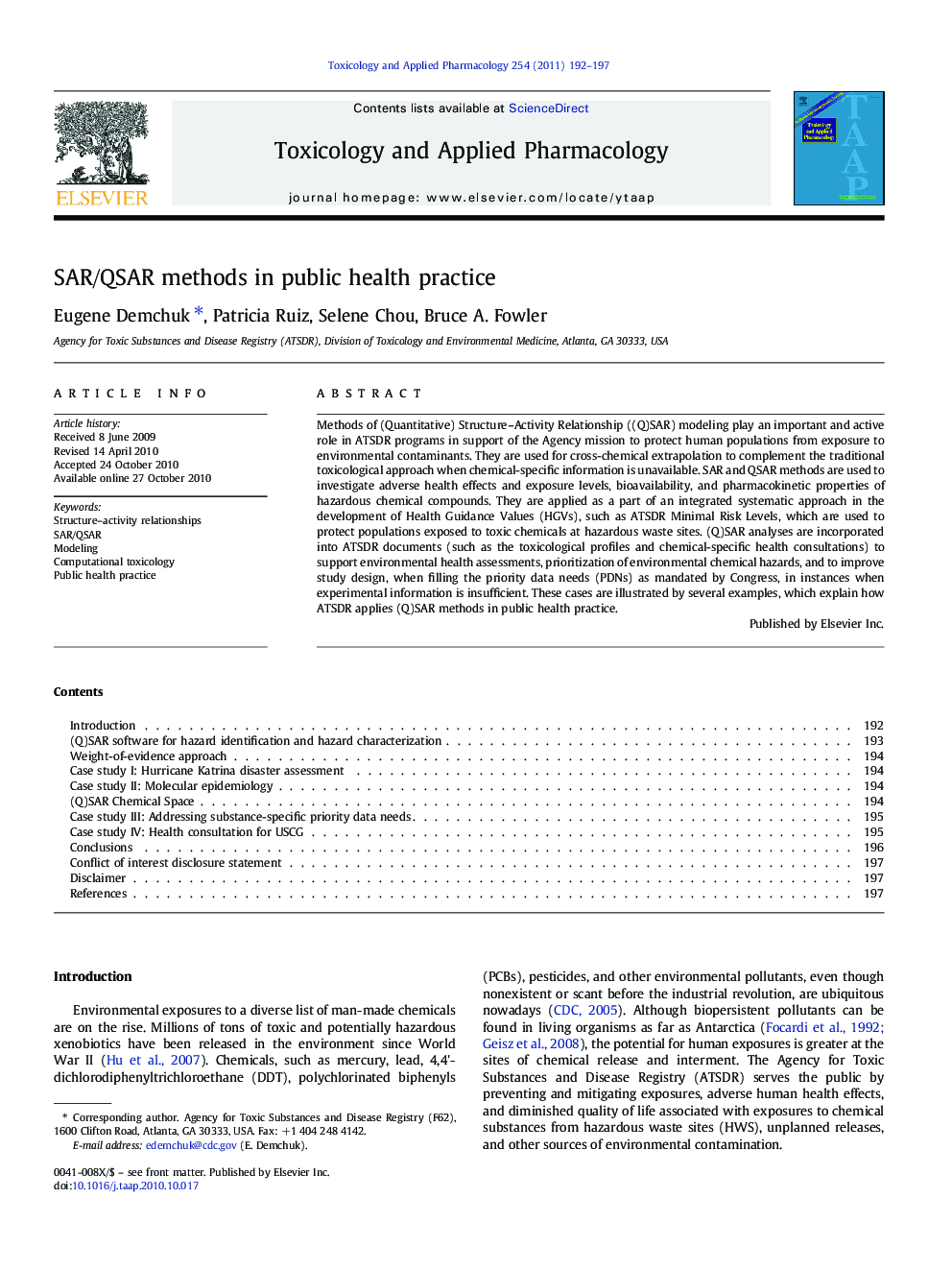| کد مقاله | کد نشریه | سال انتشار | مقاله انگلیسی | نسخه تمام متن |
|---|---|---|---|---|
| 2569439 | 1128530 | 2011 | 6 صفحه PDF | دانلود رایگان |

Methods of (Quantitative) Structure–Activity Relationship ((Q)SAR) modeling play an important and active role in ATSDR programs in support of the Agency mission to protect human populations from exposure to environmental contaminants. They are used for cross-chemical extrapolation to complement the traditional toxicological approach when chemical-specific information is unavailable. SAR and QSAR methods are used to investigate adverse health effects and exposure levels, bioavailability, and pharmacokinetic properties of hazardous chemical compounds. They are applied as a part of an integrated systematic approach in the development of Health Guidance Values (HGVs), such as ATSDR Minimal Risk Levels, which are used to protect populations exposed to toxic chemicals at hazardous waste sites. (Q)SAR analyses are incorporated into ATSDR documents (such as the toxicological profiles and chemical-specific health consultations) to support environmental health assessments, prioritization of environmental chemical hazards, and to improve study design, when filling the priority data needs (PDNs) as mandated by Congress, in instances when experimental information is insufficient. These cases are illustrated by several examples, which explain how ATSDR applies (Q)SAR methods in public health practice.
Journal: Toxicology and Applied Pharmacology - Volume 254, Issue 2, 15 July 2011, Pages 192–197